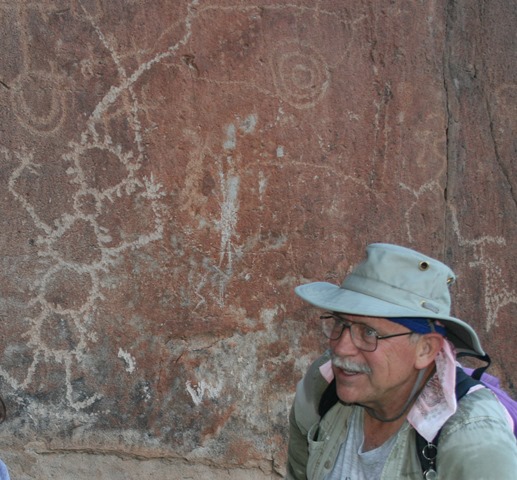

The Hohokam archaeological culture flourished in southern Arizona as early as the sixth century. Hohokam artifacts, architecture, and other material culture provide clues allowing archaeologists to identify where the Hohokam lived, interpret how they adapted to the Sonoran Desert for centuries, and explain why their culture collapsed in the mid-1400s. This presentation illustrates Hohokam material culture and presents possible interpretations about their relationships to the natural world, time reckoning, religious practices, beliefs, and deities, and possible reasons for the eventual demise of their way of life. Abundant illustrations of Hohokam artifacts, rock art, and archaeological features are included.
 Allen (“Al”) Dart holds a master’s degree in anthropology from The University of Arizona and is a Registered Professional Archaeologist who has worked and volunteered in Arizona and New Mexico archaeology since 1975. He currently serves as a State Cultural Resources Specialist/Archaeologist with the USDA Natural Resources Conservation Service in Phoenix and as the Executive Director of the Old Pueblo Archaeology Center, a Tucson non-profit organization that he founded in 1993 to provide educational and scientific programs in Southwestern archaeology and cultures. Dart is a recipient of the Arizona Governor’s Award in Public Archaeology and the Arizona Archaeological Society’s Professional Archaeologist of the Year Award for his efforts to bring archaeology and history to the public.
Allen (“Al”) Dart holds a master’s degree in anthropology from The University of Arizona and is a Registered Professional Archaeologist who has worked and volunteered in Arizona and New Mexico archaeology since 1975. He currently serves as a State Cultural Resources Specialist/Archaeologist with the USDA Natural Resources Conservation Service in Phoenix and as the Executive Director of the Old Pueblo Archaeology Center, a Tucson non-profit organization that he founded in 1993 to provide educational and scientific programs in Southwestern archaeology and cultures. Dart is a recipient of the Arizona Governor’s Award in Public Archaeology and the Arizona Archaeological Society’s Professional Archaeologist of the Year Award for his efforts to bring archaeology and history to the public.